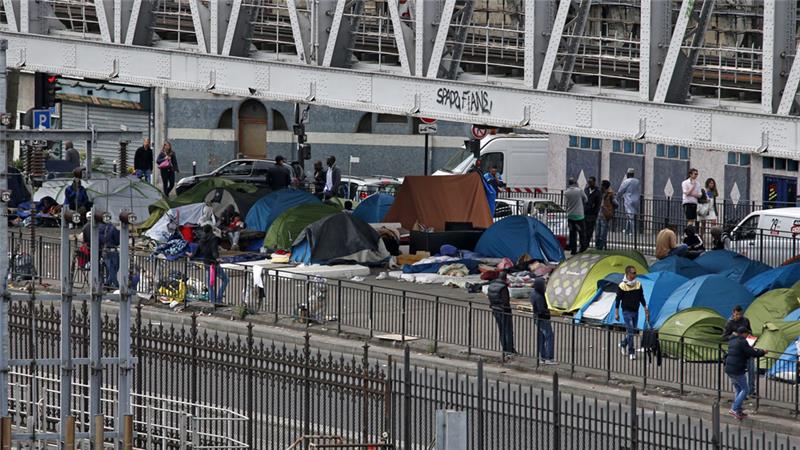Foreign News
Migrants in France choosing streets over shelters

An elevated metro bridge provides shelter for migrants who have established a makeshift tent city in Paris
Migrants complain of being sent to squalid shelters, as France unveils plan to reduce asylum processing times.
Waking at dawn to the shouts of police and the bright headlights of buses waiting to take them away, Yacoub Mansour and more than 300 other migrants living under a bridge were becoming aware that their time in this part of Paris was up.
In the early hours of June 2, 27-year-old Mansour, a Libyan, and the others – mainly from Sudan and Eritrea – were told by police to get on the buses and leave their tents and cardboard for proper shelter.
It was not what they had expected.
With dedicated asylum shelters overbooked, Mansour was brought instead to a hotel – part of the emergency housing used by government to help the homeless, an increasing proportion of whom are asylum seekers.
“We were two to a room,” said Mansour.
“Three days with no food. We asked and they said they don’t give food to migrants.” If he had had any money, Mansour might have been able to eat someplace nearby, but he is penniless.
Caught up in an asylum system that a parliamentary committee report described as mired in crisis, Mansour is among the migrants who say the shelters are even worse than the streets they are pulled from.
“Numerous migrants return from so-called shelters within days – sometimes in just hours,” said Eve Shahshahani, asylum programme manager for ACAT, a Christian human rights organisation.
“They have to go back to where they camped to get free food from NGOs and neighbours. Otherwise they cannot survive. The accommodation is short-term, and many of them are asked to leave after one night.”
Of some 65,000 people who applied for asylum in France in 2014, fewer than 15,000 gained access to asylum lodgings. The remaining 50,000 or so sleep in emergency shelters, with family and friends, or in the makeshift camps across the country from the streets of Lyon and Paris to the squalid “jungles” of Calais.
The number of people fleeing to France for protection has almost doubled between 2007 and 2014. But only a few thousand new shelter places have been created over that time, leaving a rapidly rising number of asylum seekers homeless for the 18 months or more that it takes on average to process their claims.
As a black Tuareg in Libya, Mansour said he was suspected of having fought for the late dictator Muammar Gaddafi, and feared his days were numbered. He described troops going from house to house, looting and carrying out revenge attacks.
When his brother, a former soldier, was accused of theft and taken away by troops, Mansour went into hiding until he and three friends boarded a boat to cross the Mediterranean Sea to Europe.
He and a few dozen migrants took trains from Italy into France, disembarking when controllers checked for tickets that no one had. And so they continued, getting off one train and waiting for another, until Mansour and the dwindling group of travellers realised they were finally in France


